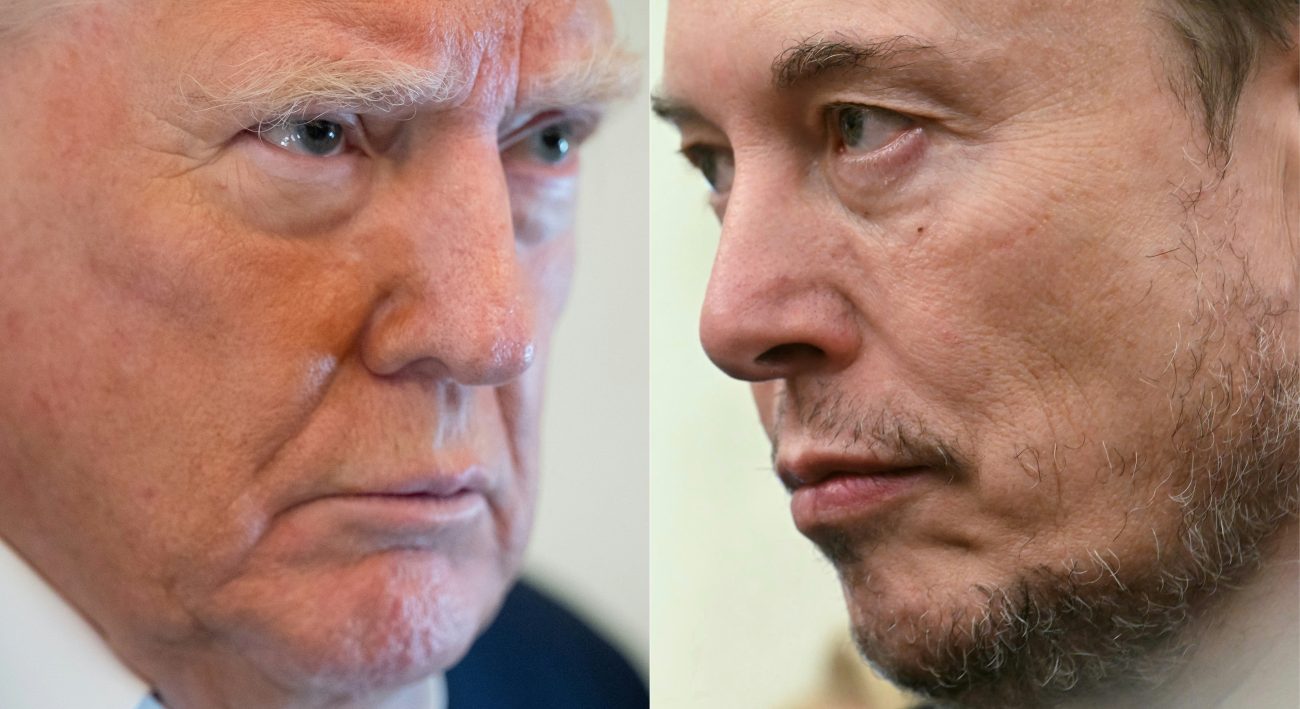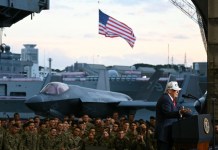The competition for the Golden Dome is intensifying with major US defense firms gearing up to get a slice of the multi-billion-dollar missile defense system. Northrop Grumman, one of the largest US defense contractors, has announced that it has begun ground-based testing for space-based interceptors.
The space-based interceptors are a crucial component of the Golden Dome project. This entails establishing missile interceptors in space, which are capable of destroying ballistic and hypersonic missiles in the boost phase, or their “mid-course phase.”
Kathy Warden, Northrop Grumman’s CEO, provided information about the company’s work on space-based interceptors, as well as the company’s preparation for the Golden Dome project in general, during a quarterly earnings call on July 23.
Warden also assured the company’s investors that Northrop Grumman could proceed with this project at a pace that would deliver results within the timeframe intended by the Trump administration.
“As we look to Golden Dome for America, we see Northrop Grumman playing a crucial role in supporting the administration’s goal to move with speed and have initial operating capability in place within the next few years. This includes current products that can be brought to bear, like IVCS, Gator, Triton, and programs in a restricted portfolio, just to name a few,” Warden said.

The Trump administration has set an ambitious timeline for the project, with a projected completion date of the end of Trump’s second Presidential term in 2029.
Furthermore, Warden informed that the company is working on space-based interceptors.
“It will also include new innovations like space-based interceptors, which we’re testing now,” Warden said.
She added that Northrop Grumman has the ability and expertise to scale production for Golden Dome.
“We have the ability to work across the entire architecture, and we bring the scale, innovation, and research and development expertise that we can apply to each layer of this critical homeland defense initiative.”
“Golden Dome is just one example of how the administration is pushing for differentiating capabilities at speed and scale to achieve peace through strength,” she added.
On a specific question of whether Grumman was testing the missile interceptors in orbit or on the ground, Warden said, “These are ground-based tests today, and we are in competition, obviously, so not a lot of detail that I can provide here. It is the capability that we believe can be accelerated and into the time frame that the administration is looking for.”
She also refused to clarify whether these missile interceptors were “directed energy or kinetic approach.”
It is worth noting that the ambitious Golden Dome project is still in its infancy, and even the US military is still refining its requirements for space-based interceptors.
Earlier this month, the US Space Force’s Program Executive Office for Space Combat Power, part of the Space and Missile Systems Center (SMC), issued a request for information (RFI) seeking details on how contractors might develop missile interceptors.
The RFI provided a general vision for the Golden Dome project, stating that it could include two types of interceptors: space-based and ground-based. The US Space Force took care to clarify that they were still in the process of market research and the RFI is not a “request for proposals.”
“The Space Force PEO Space Combat Power is conducting market research to identify Space Based Interceptor (SBI) capabilities to address the threat of attack by ballistic and hypersonic missiles,” it said.
“The purpose of this RFI is to identify existing space-based missile defense capabilities and strategize on an architecture of a proliferated SBI constellation capable of boost-phase, mid-course-phase, and glide-phase intercepts. This is not a request for proposals. The Government does not intend to award a contract on the basis of this request,” the RFI clarified.
The RFI also described the two variants of missile interceptors, Exoatmospheric and Endoatmospheric, which could form the basis for the Golden Dome.
“Space-based Interceptors are a class of weapon systems designed to intercept and destroy enemy targets (missiles or associated payloads) in flight. This element comprises multiple variants and components: Exoatmospheric SBIs are designed to destroy targets in the boost and mid-course phases outside the Earth’s atmosphere (above 120 km), employing a kill vehicle (KV), guidance and navigation systems, communications, and propulsion for both initial engagement and terminal guidance maneuvers.”
“Endoatmospheric SBIs are designed to destroy targets within the Earth’s atmosphere (below 120 km), employing a KV, guidance and navigation systems, communications, and propulsion for initial engagement and terminal guidance maneuvers while accounting for atmospheric effects,” it added.
Notably, the space-based missile interceptors of the Golden Dome alone could bring in deals worth billions of dollars.
“I’m equally excited about Golden Dome for America, which is a new set of opportunities, very significant funding there, as you know, in the reconciliation bill, and our opportunity to pursue some of that work,” Warden noted.
The reconciliation funding bill, also known as the ‘One Big Beautiful Bill Act,’ was signed into law earlier this month. It sanctioned nearly US$25 billion for integrated air and missile defense efforts, or the Golden Dome project. The act also sanctioned US$5.6 billion specifically “for development of space-based and boost phase intercept capabilities.”
Golden Dome & Weaponization Of Space
Notably, the US plans for space-based missile interceptors as part of the Golden Dome project are not free from controversy. Critics, including China and Russia, have accused the US of weaponizing space and warned that the move has the potential to start a space arms race and destabilize the rules-based international system.
Addressing these criticisms, US Space Force Gen. Chance Saltzman, chief of Space Operations, told Defense One in March that the adversaries of the US, such as China and Russia, have already started weaponizing space.
“Depends on where you sit, right, you know? But to say that it’s the responsibility for the U.S. government to protect its citizens from emerging threats makes perfect sense to me,” Saltzman said. “And we clearly see a country like the PRC [People’s Republic of China] investing heavily in these kinds of threats, whether it’s hypersonic [weapons], whether it’s threats from space. And so now it’s time for the U.S. government to step up to the responsibilities to protect American citizens from those threats.”
“What I think we’re really recognizing is now space is a contested war-fighting domain, and that’s what’s new, not that the military is considering offensive and defensive operations. Militaries always conduct offensive and defensive operations to contest the domains to meet military objectives. We just recently had to up our game, if you will, because space has become a warfighting domain,” Saltzman said.
SpaceX Out Of Golden Dome Project?
As Northrop Grumman eyes lucrative multi-billion-dollar deals in the field of space-based interceptors, it appears its competition is becoming easier, as one of its main competitors might be out of the race.
Reuters reported today that the Trump administration is expanding its search for partners to build the Golden Dome missile defense system, courting Amazon.com’s Project Kuiper and big defense contractors as tensions with Elon Musk threaten SpaceX’s dominance in the program, according to three sources familiar with the matter.

“Even before the spat, officials at the Pentagon and White House had begun exploring alternatives to SpaceX, wary of over-reliance on a single partner for huge portions of the ambitious, $175 billion space-based defense shield, two of the sources said.”
Interestingly, earlier in April, it was reported that SpaceX was the frontrunner to build Trump’s Golden Dome missile shield. However, a public fallout with Trump seems to have hurt SpaceX’s chances of building Golden Dome.
SpaceX’s potential ouster from the Golden Dome project could directly benefit Northrop Grumman.
- Sumit Ahlawat has over a decade of experience in news media. He has worked with Press Trust of India, Times Now, Zee News, Economic Times, and Microsoft News. He holds a Master’s Degree in International Media and Modern History from the University of Sheffield, UK.
- VIEWS PERSONAL OF THE AUTHOR.
- He can be reached at ahlawat.sumit85 (at) gmail.com




